India is a land of timeless beauty, rich history, and cultural diversity, home to some of the world’s most iconic landmarks. From ancient temples and majestic forts to modern marvels and UNESCO World Heritage Sites, the country offers countless destinations that showcase its glorious past and vibrant present. Whether you're exploring the grandeur of the Taj Mahal, walking through the historic halls of Mysore Palace, or witnessing spiritual serenity at the Golden Temple, each landmark tells a unique story. In this guide to the 20 most famous landmarks in India to visit, we highlight must-see destinations that reflect India’s heritage and charm. Perfect for history buffs, culture lovers, and travel enthusiasts planning their next adventure!
Top 25 Most Famous Landmarks in India:
Taj Mahal, Agra:
The Taj Mahal in Agra is undoubtedly one of the most famous landmarks in India and a must-visit on any traveler's bucket list. Recognized as one of the Seven Wonders of the World and a UNESCO World Heritage Site since 1983, this magnificent white marble mausoleum is a timeless symbol of love and architectural brilliance.
Built by Emperor Shah Jahan between 1631 and 1648 in memory of his beloved wife Mumtaz Mahal, the Taj Mahal attracts millions of tourists every year. Known for its intricate carvings, symmetrical design, and enchanting sunrise views, it represents the grandeur of Mughal architecture and remains the crown jewel of Indian heritage sites in 2025.
Swaminarayan Akshardham, New Delhi:
Located near the serene banks of the Yamuna River, Swaminarayan Akshardham in New Delhi stands as one of the most famous landmarks in India and the world’s largest Hindu temple. This architectural marvel is not just a place of worship but a cultural epicenter that beautifully showcases India’s rich spiritual heritage.
Spread across 12 hectares, the temple complex features a grand central shrine, intricately carved sandstone and marble structures, a cultural museum, musical fountain, and lush gardens.
With over 20,000 statues of deities and sages, Akshardham offers visitors an immersive journey through Indian traditions, history, and values, making it a must-visit destination in 2025 for travelers exploring Indian heritage sites.
Qutub Minar, New Delhi:
Qutub Minar in New Delhi stands as one of the most famous landmarks in India and a shining example of Indo-Islamic architecture. Towering at 73 meters, it is the tallest brick minaret in the world and a designated UNESCO World Heritage Site. Built in 1200 AD by Qutb-ud-din Aibak, this historic monument marks a significant shift in India’s medieval history.
Featuring five intricately carved storeys and surrounded by ancient ruins and the Quwwat-ul-Islam Mosque, it draws over 3 million visitors annually.
With its unmatched architectural brilliance and the mysterious Iron Pillar in its courtyard, Qutub Minar remains one of the top tourist attractions in India and a must-visit for history lovers in 2025.
Agra Fort, Agra:
Sprawling across 380,000 square meters, Agra Fort stands as one of the most famous landmarks in India and a crown jewel of Mughal architecture. Recognized as a UNESCO World Heritage Site since 1983, this magnificent red sandstone fortress attracts over 2 million visitors annually. Built in 1565 by Emperor Akbar, the fort served as the main residence of the Mughal emperors until 1638, when the capital shifted from Agra to Delhi.
Often described as a walled city, Agra Fort features a 2.5 km perimeter with soaring 70-foot walls that enclose grand palaces, two elegant mosques, and majestic audience halls. If you're passionate about Indian heritage sites and historic monuments, Agra Fort offers an unforgettable journey into the heart of India’s imperial past.
Hawa Mahal, Jaipur:
Located just 300 km from Delhi, Hawa Mahal in Jaipur is one of the most famous landmarks in India and a must-visit for history and architecture lovers. Also known as the Palace of Winds, this five-storey marvel was built in 1799 by Maharaja Sawai Pratap Singh.
Build from red and pink sandstone, its unique façade features 953 small windows—or jharokhas—designed to allow royal women to observe city life unseen. With its crown-like structure inspired by Lord Krishna, Hawa Mahal remains one of the top Jaipur tourist attractions.
Visitors today can explore its intricate corridors and enjoy panoramic views of Jaipur’s bustling streets, City Palace, and Jantar Mantar. A true blend of Rajputana elegance and cultural significance, Hawa Mahal is an unforgettable stop on any India travel itinerary.
Amber Fort, Jaipur:
Cradled atop the Aravalli Hills, Amber Fort (also known as Amer Fort) is one of the most famous landmarks in India and a must-visit tourist attraction in Jaipur.
Located just 11 km from the vibrant Pink City, this majestic fort is a prime example of Rajputana architecture, blending intricate Hindu motifs with Mughal influences. Built in 1592 by Raja Man Singh I, Amber Fort once served as the royal residence of the Rajput kings.
Today, it stands as a testament to India’s rich heritage and architectural brilliance. Constructed with glowing yellow and pink sandstone, the fort boasts grand courtyards, mirror-studded halls, and maze-like corridors that captivate every visitor.
Ranked among the most visited historical places in India, Amber Fort is an iconic symbol of Rajasthan's royal legacy and a top highlight in any Jaipur itinerary.
City Palace, Jaipur:
City Palace Jaipur is one of the most iconic tourist attractions in Jaipur, located right in the heart of the Pink City. A majestic symbol of Rajasthan’s royal heritage, this architectural marvel was built between 1729 and 1732 by Sawai Jai Singh II, blending Rajput, Mughal, and European styles in a breathtaking design.
The complex includes courtyards, gardens, temples, and the renowned Maharaja Sawai Man Singh II Museum, which showcases royal costumes, weapons, and artifacts. Still home to the Jaipur royal family, City Palace offers an immersive look into the opulence of India’s regal past.
Whether you’re exploring the ornate gateways or strolling through its grand halls, City Palace is a must-visit among all places to see in Jaipur. No trip to Rajasthan is complete without witnessing its grandeur.
Jantar Mantar, Jaipur:
Jantar Mantar in Jaipur stands as one of the most famous landmarks in India, attracting history lovers, science enthusiasts, and curious travelers alike. Built in the early 18th century by Maharaja Sawai Jai Singh II, this UNESCO World Heritage Site is an architectural and astronomical masterpiece.
It features the world’s largest stone sundial and a collection of 19 unique instruments used to observe celestial phenomena. As a top tourist destination in Rajasthan, Jantar Mantar beautifully blends scientific innovation with India’s royal heritage.
Whether you're exploring heritage sites in India or searching for historic monuments in Jaipur, Jantar Mantar is a must-visit in 2025 for cultural travelers and students alike. Its timeless relevance in astronomy continues to impress modern-day scholars and tourists from around the globe.
Red Fort, New Delhi:
The Red Fort in New Delhi is one of the most famous landmarks in India, representing the grandeur of Mughal architecture and India's rich cultural heritage. Built between 1639 and 1648 by Emperor Shah Jahan, this iconic historical monument became the royal residence when the Mughal capital moved from Agra to Delhi.
Constructed using striking red sandstone, the fort’s massive walls, majestic gates, and intricate design attract millions of visitors every year. Declared a UNESCO World Heritage Site in 2007, the Red Fort Delhi is also the ceremonial site for India’s Independence Day celebrations.
With its museums, historical significance, and timeless charm, the Red Fort remains a top destination for travelers looking to explore famous Indian monuments and dive deep into the country’s majestic past.
Gateway of India, Mumbai:
The Gateway of India is one of the most famous landmarks in India and a must-visit historical monument in Mumbai. Overlooking the majestic Arabian Sea at Apollo Bunder, this iconic 26-meter arch was built to commemorate the 1911 visit of King George V and Queen Mary.
Completed in 1924, it served as the ceremonial entrance for British Viceroys and other dignitaries. Despite its 20th-century origin, the structure features 16th-century Gujarat-style architecture fused with Islamic influences, resembling a triumphal arch.
Today, the Gateway of India is a vibrant hub for tourists, photographers, street vendors, and street food lovers alike. Whether you're interested in history, culture, or architecture, this site remains one of the top tourist attractions in India and a symbol of Mumbai’s colonial past and cosmopolitan spirit.
Charminar, Hyderabad:
Charminar is undeniably one of the most famous landmarks in India, located in the heart of Hyderabad. Built in 1591 by Muhammad Quli Qutb Shah, the fifth ruler of the Qutb Shahi Dynasty, this architectural marvel stands as a symbol of Hyderabad’s rich cultural heritage.
With four grand minarets soaring to 48.7 meters, Charminar represents the first four caliphs of Islam, blending Indo-Islamic architecture with deep religious significance. A 400-year-old mosque crowns the top floor, making it a revered site for worship and reflection.
Surrounded by bustling bazaars like Laad Bazaar and Mecca Masjid, Charminar becomes especially vibrant during festivals such as Eid-al-Fitr. For anyone exploring historical places in India, Charminar is a must-visit — a true icon among famous Indian monuments and a defining symbol of Hyderabad.
Meenakshi Amman Temple, Madurai:
Located on the southern bank of the Vaigai River in Madurai, Meenakshi Amman Temple stands as one of the most famous landmarks in India. This historic Hindu temple, dedicated to Goddess Meenakshi and Lord Shiva, is celebrated for its vibrant Dravidian architecture, rich carvings, and spiritual significance.
With over 33,000 intricate sculptures, a sacred ritual pond, and the awe-inspiring Hall of a Thousand Pillars, it’s a must-visit for cultural explorers and pilgrims alike. The temple also hosts Chithirai Thiruvizha, one of India’s grandest festivals, attracting millions every April.
As a top tourist attraction in Tamil Nadu, Meenakshi Temple offers a deeply immersive experience into India’s ancient art, faith, and tradition—making it a prime destination in 2025 for those seeking cultural depth and architectural brilliance.
Golden Temple, Amritsar:
The Golden Temple in Amritsar is one of the most famous landmarks in India, renowned worldwide for its breathtaking golden façade and spiritual significance. As the holiest pilgrimage site for Sikhs, this iconic temple beautifully blends 16th-century Hindu and Islamic architectural styles with intricate designs and shimmering gold-plated walls. Located around the sacred Amrit Sarovar (holy pond), the temple appears to float gracefully on water, creating a serene and awe-inspiring atmosphere.
Millions of devotees visit the Golden Temple each year to take a holy dip in the pond, believed to cleanse sins and bring spiritual peace. Beyond its architectural grandeur, the Golden Temple stands as a symbol of harmony, equality, and devotion. Whether you seek spiritual solace or cultural heritage, visiting this historic Indian temple is an unforgettable experience.
Lotus Temple, New Delhi:
The Lotus Temple in New Delhi stands as one of the most famous landmarks in India, celebrated worldwide for its stunning architecture and spiritual significance. Completed in 1986 and designed by Iranian architect Fariborz Sahba, this Bahá’í House of Worship draws inspiration from the lotus flower, symbolizing purity, peace, and unity.
With 27 free-standing marble petals, the temple is an architectural masterpiece surrounded by serene gardens and nine reflecting pools, creating a tranquil environment for visitors. Unlike many ancient Indian landmarks, the Lotus Temple represents modern design fused with India’s rich tradition of religious diversity.
It has quickly become a major tourist attraction and a symbol of harmony among different faiths. Recognized with international awards, including the GlobArt Academy award, the Lotus Temple exemplifies the spirit of unity and is a must-visit when exploring India’s iconic landmarks in 2025.
Sun Temple, Konark:
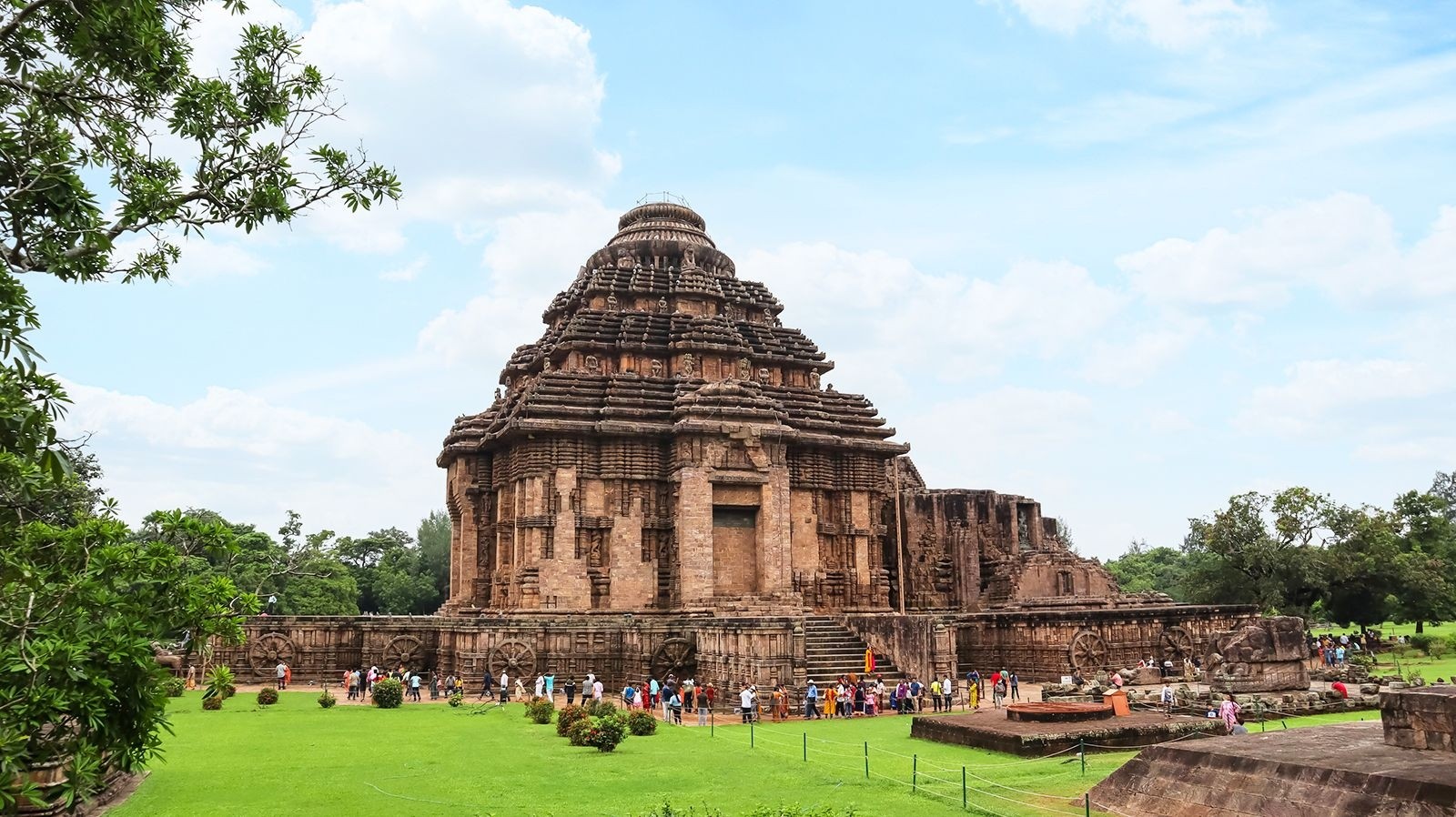
The Sun Temple in Konark, Odisha, is one of the most famous landmarks in India and a masterpiece of ancient Indian architecture. Built in the 13th century by King Narasimhadeva I of the Eastern Ganga Dynasty, this UNESCO World Heritage Site is designed in the shape of a colossal chariot dedicated to the Sun God, Surya. The temple features 24 intricately carved wheels and is pulled by seven majestic stone horses, symbolizing time and cosmic movement. Known for its stunning stone carvings and astronomical precision, the Konark Sun Temple reflects the brilliance of India’s cultural and engineering heritage. Though partially in ruins today, it continues to draw global attention for its historical and architectural significance. A must-visit in any 2025 travel guide, it stands as a proud icon of India's ancient temples and spiritual legacy.
Khajuraho Temples, Madhya Pradesh:
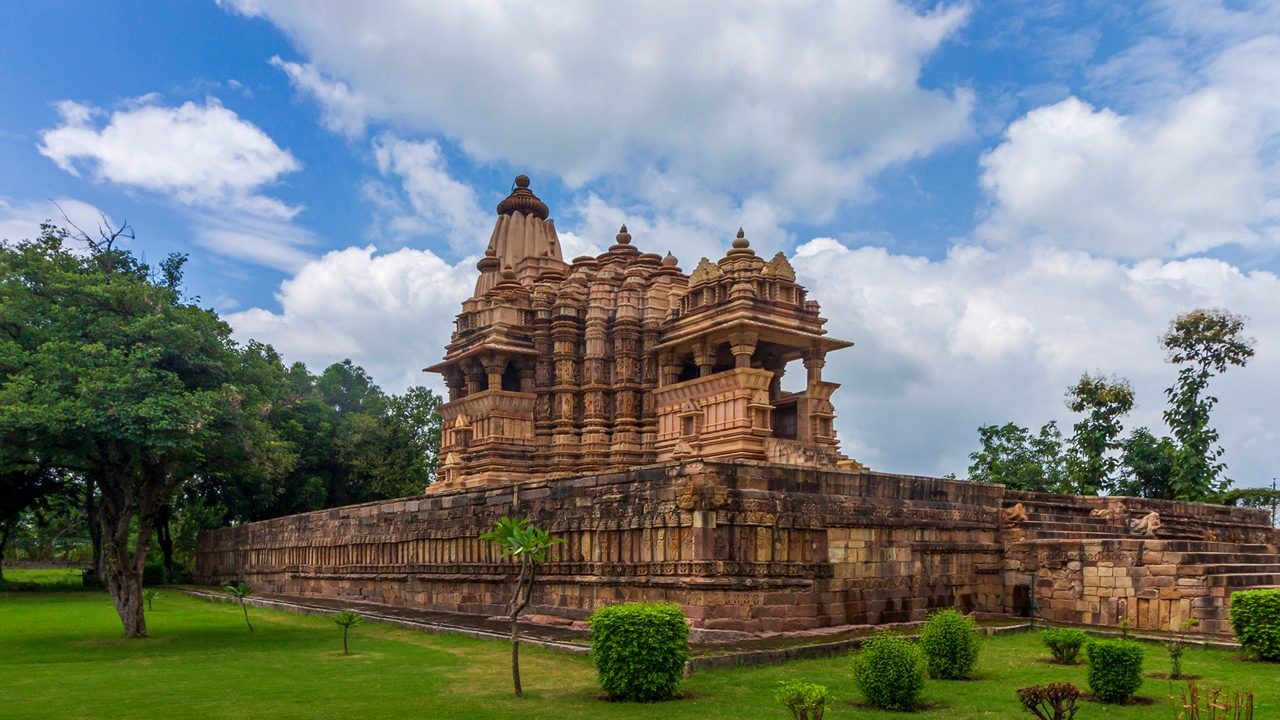
The Khajuraho Temples in Madhya Pradesh are among the most famous landmarks in India, renowned for their stunning architecture and intricate erotic sculptures. Built between the 9th and 12th centuries by the Chandela dynasty, these temples are a UNESCO World Heritage Site and a testament to India’s artistic and spiritual heritage. Out of the original 85 temples, around 20 have survived, showcasing themes of love, life, and devotion through detailed stone carvings. The temples are divided into Hindu and Jain complexes, reflecting the region’s historical religious diversity. Known for their harmony of design and symbolism, the Khajuraho Temples attract tourists, historians, and spiritual seekers from around the world. In 2025, they remain a top destination for cultural tourism, offering a glimpse into the refined craftsmanship and philosophical depth of ancient Indian temples.
Brihadeeswarar Temple, Thanjavur:
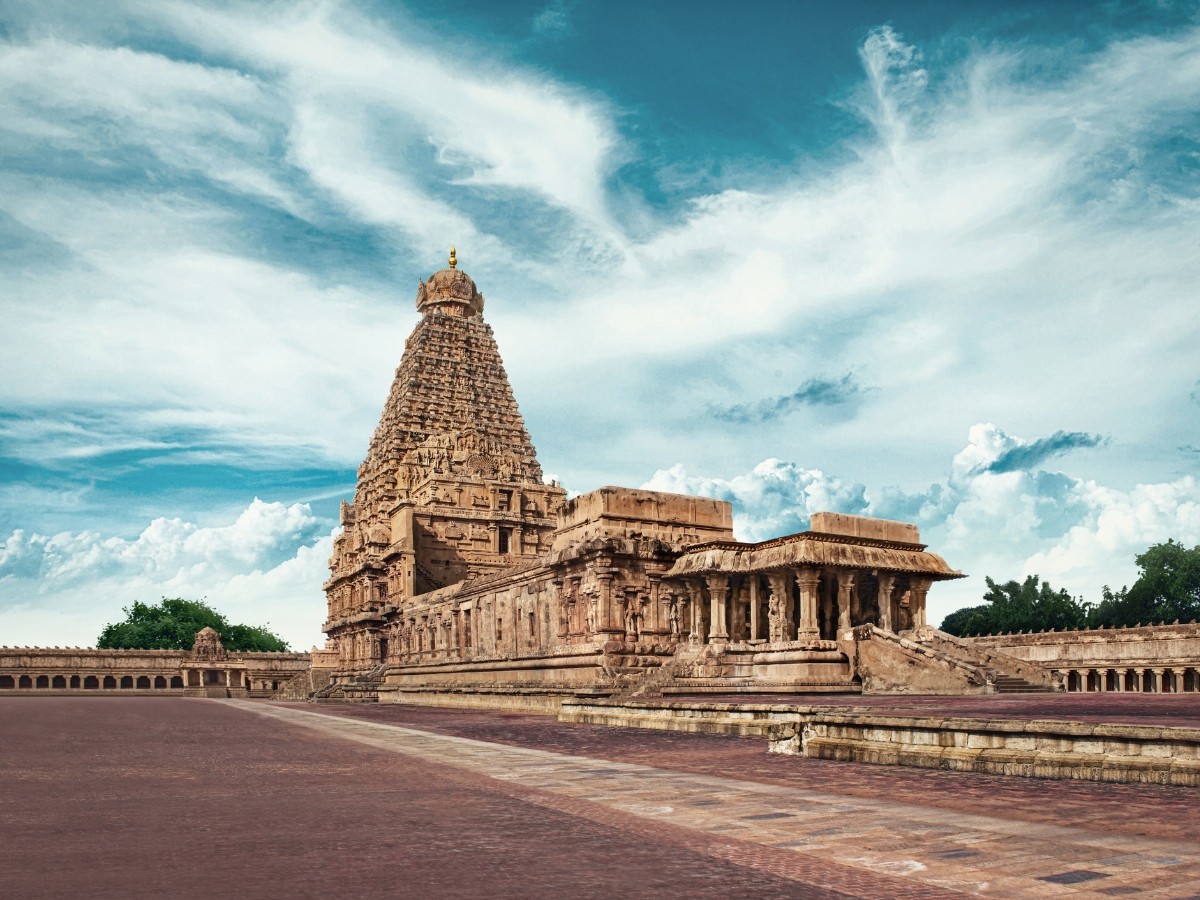
The Brihadeeswarar Temple in Thanjavur, Tamil Nadu, is one of the most famous landmarks in India and a shining example of Dravidian temple architecture. Built in the 11th century by Raja Raja Chola I, this UNESCO World Heritage Site is part of the "Great Living Chola Temples." Dedicated to Lord Shiva, the temple is renowned for its massive vimana (tower), which rises over 66 meters, and its intricately carved granite structures. The temple's majestic Nandi statue, carved from a single stone, and precision-engineered layout reflect the advanced knowledge of architecture and astronomy during the Chola dynasty. Still an active place of worship, the Brihadeeswarar Temple stands as a symbol of South India’s rich cultural and spiritual legacy. In 2025, it remains a must-visit destination for those exploring India’s ancient temples and historical monuments.
Mysore Palace, Mysore:
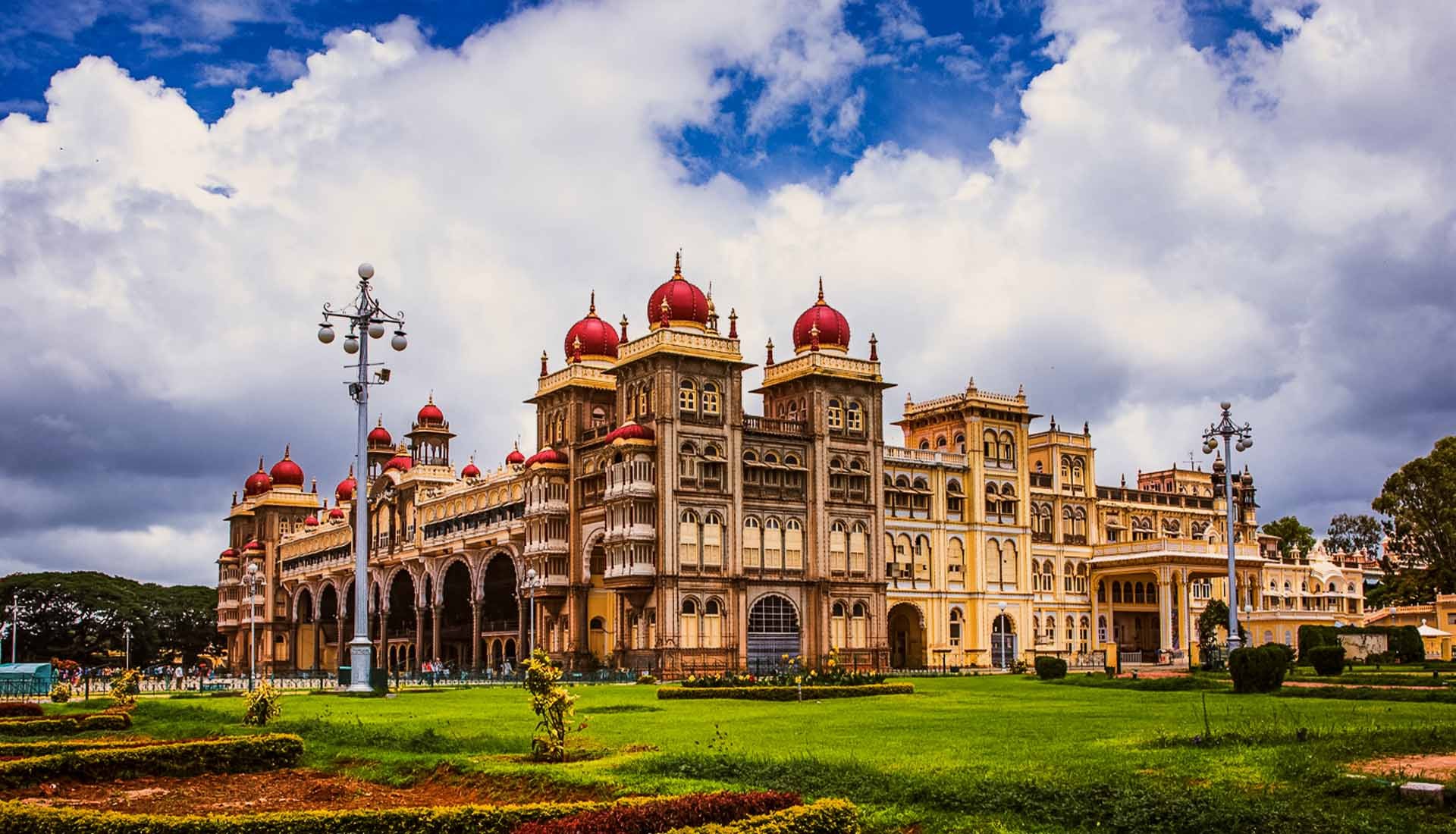
The Mysore Palace in Karnataka is one of the most famous landmarks in India, known for its royal grandeur and Indo-Saracenic architectural style. Once the seat of the Wadiyar dynasty, this opulent palace was rebuilt in 1912 and beautifully blends Hindu, Mughal, Rajput, and Gothic influences. Its intricate interiors, stained glass ceilings, and ornate durbar halls reflect the splendor of royal India. Every evening, the palace is illuminated with over 90,000 lights, creating a magical spectacle that attracts thousands of visitors. The Mysore Palace is especially popular during the annual Dussehra festival, when it becomes the epicenter of grand celebrations and cultural events. A true symbol of regal heritage, it continues to be a top tourist attraction in 2025 for anyone exploring India’s iconic palaces and historical monuments.
Golconda Fort, Hyderabad:
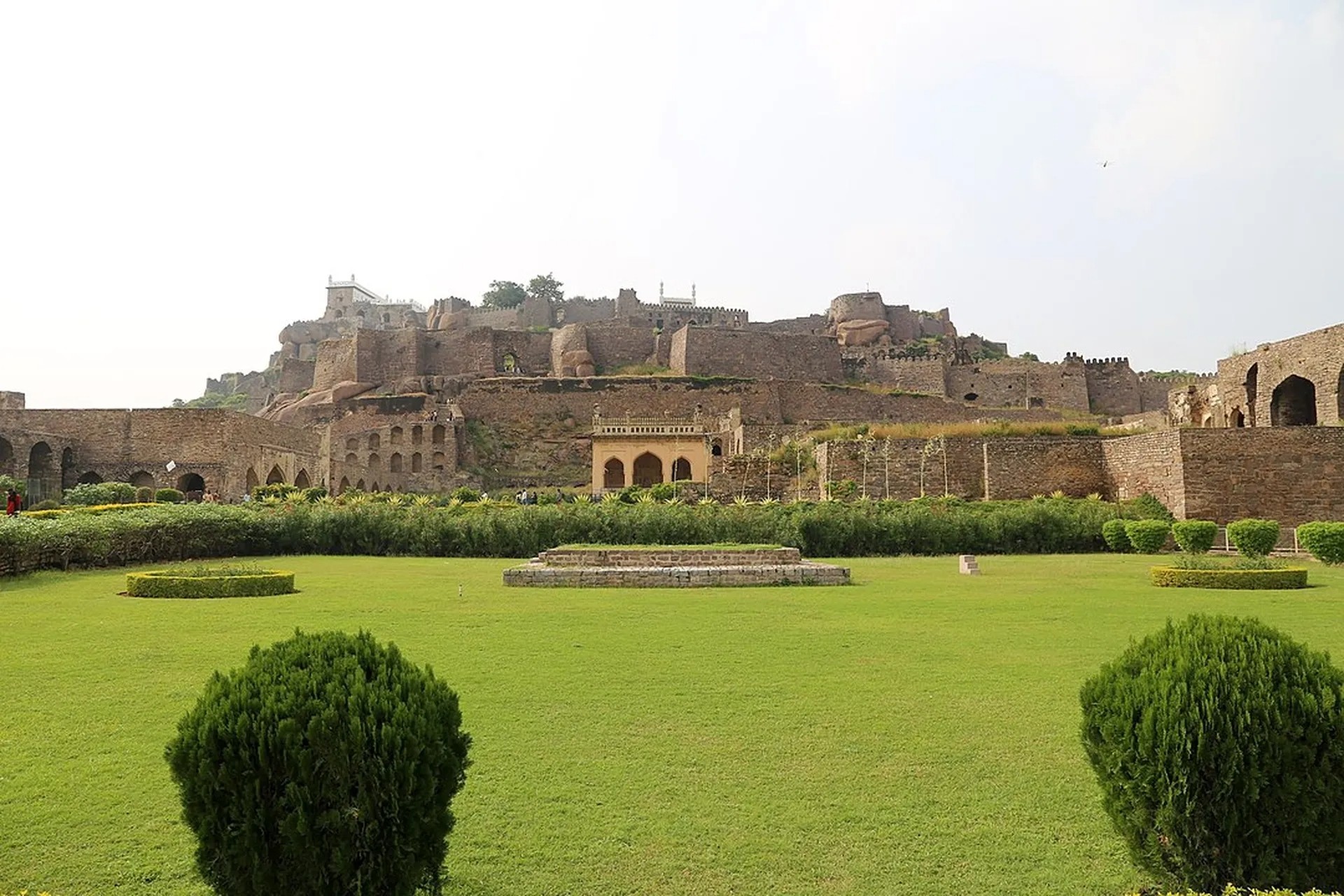
The Golconda Fort in Hyderabad, Telangana, is one of the most famous landmarks in India, celebrated for its impressive military architecture and rich historical legacy. Originally built in the 12th century by the Kakatiya dynasty and later expanded by the Qutb Shahi rulers, the fort served as a powerful capital and was once a global center for diamond trade. Known for its advanced acoustics, ventilation, and strategic design, Golconda Fort stands as a testament to medieval engineering brilliance. The fort complex includes palaces, temples, mosques, and the iconic Fateh Darwaza, where a hand clap at the entrance can be heard at the top of the hill—a marvel even today.
Sanchi Stupa, Madhya Pradesh:
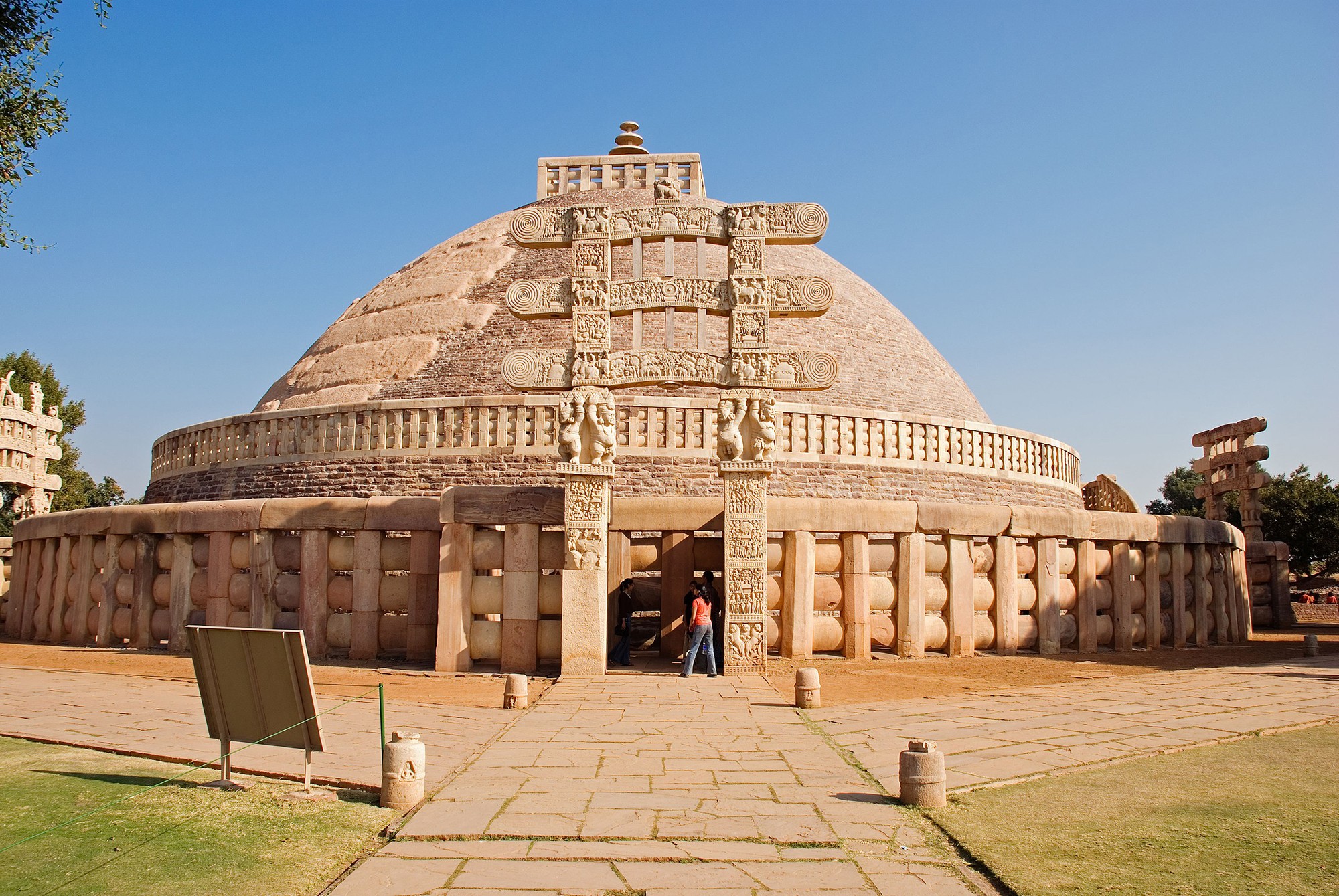
The Sanchi Stupa in Madhya Pradesh is one of the most famous landmarks in India and a revered symbol of ancient Buddhist architecture. Commissioned by Emperor Ashoka in the 3rd century BCE, this UNESCO World Heritage Site is one of the oldest stone structures in India. The Great Stupa, with its massive hemispherical dome, intricately carved gateways (toranas), and symbolic design, represents the life and teachings of the Buddha. Sanchi became a major center of Buddhism for centuries, and its artistic brilliance reflects the evolution of early Indian art and religious thought. Today, the Sanchi Stupa is a peaceful pilgrimage site and a major tourist attraction.
Victoria Memorial, Kolkata:
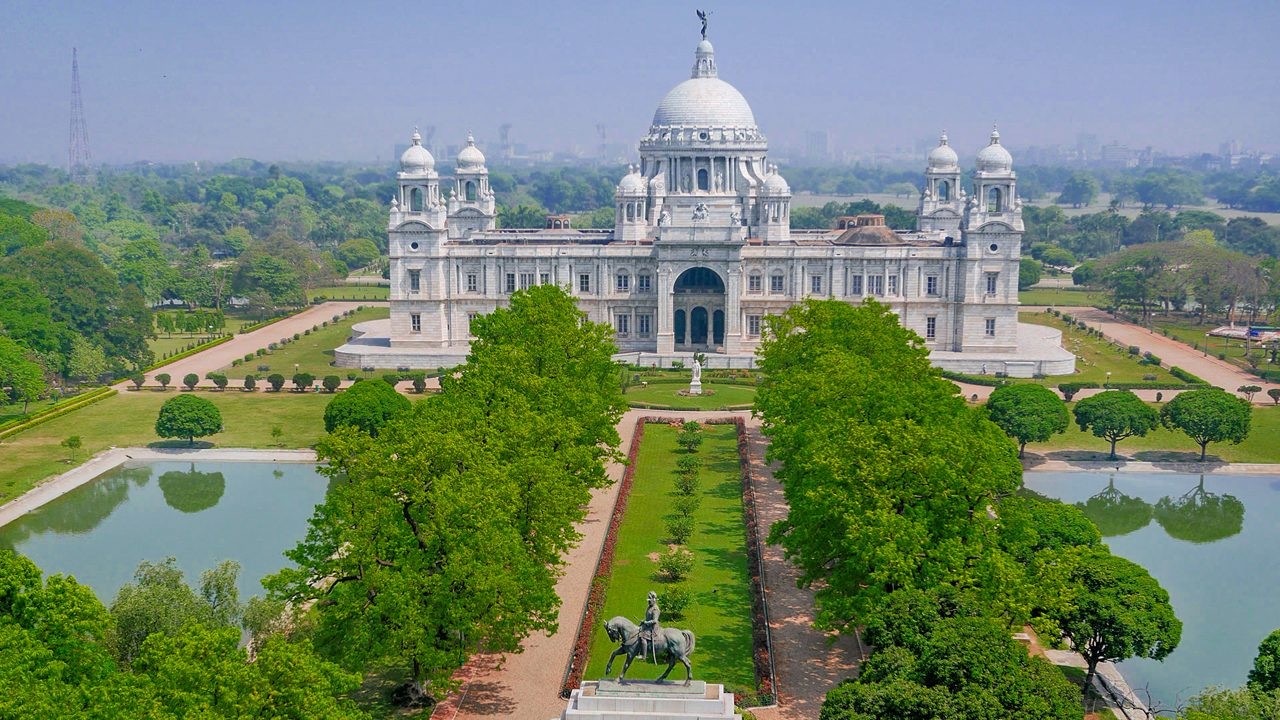
The Victoria Memorial in Kolkata, West Bengal, is one of the most famous landmarks in India, blending British and Mughal architectural styles into a stunning marble monument. Built between 1906 and 1921 to honor Queen Victoria, this grand structure houses a museum showcasing colonial-era artifacts, paintings, and historical documents. Surrounded by beautifully landscaped gardens, the Victoria Memorial stands as a symbol of Kolkata’s rich cultural heritage and colonial history. It attracts millions of tourists and history enthusiasts every year, making it a must-visit site.
Mahabalipuram Monuments, Tamil Nadu:
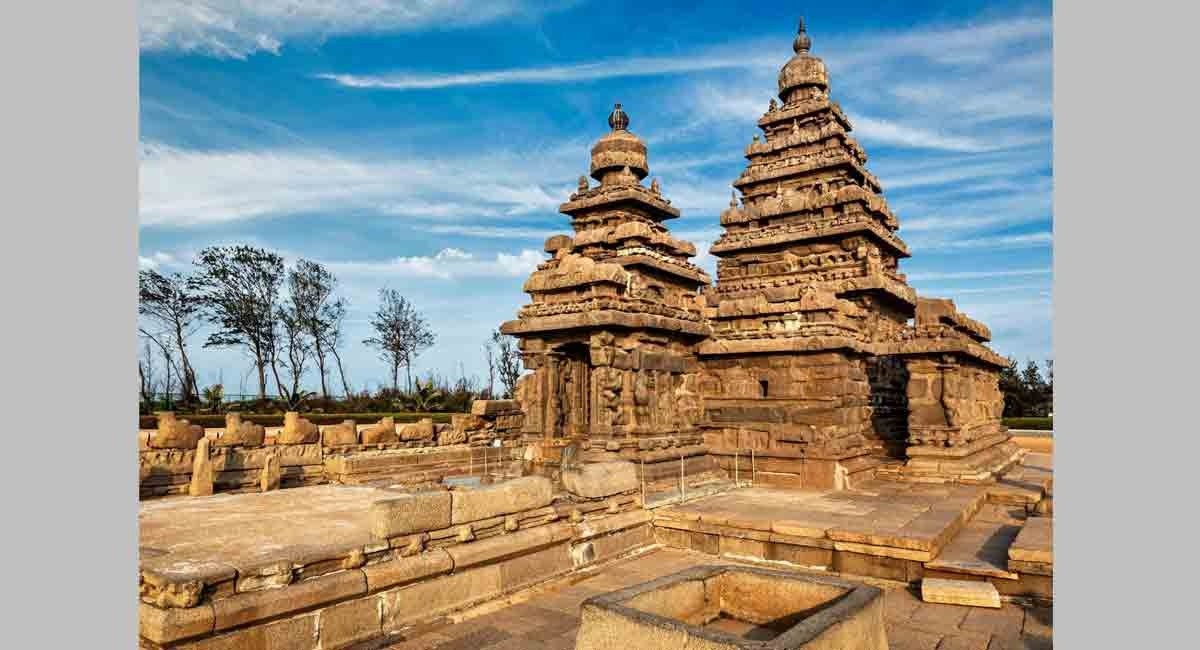
The Mahabalipuram Monuments in Tamil Nadu are among the most famous landmarks in India, renowned for their exquisite rock-cut temples and intricate stone carvings. Dating back to the 7th and 8th centuries during the Pallava dynasty, this UNESCO World Heritage Site showcases a unique blend of architectural innovation and artistic mastery. Famous for the Shore Temple, Arjuna’s Penance, and intricately sculpted cave temples, Mahabalipuram reflects early South Indian temple architecture and mythology. Located along the Coromandel Coast, these monuments attract tourists, historians, and art lovers from around the world.
Chhatrapati Shivaji Terminus, Mumbai:
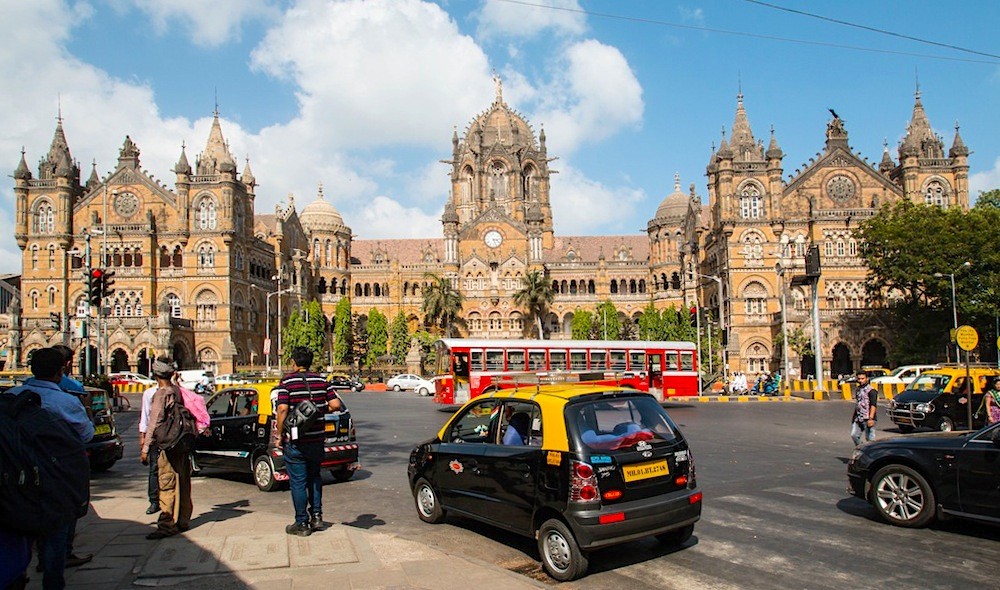
The Chhatrapati Shivaji Terminus (CST) in Mumbai, Maharashtra, is one of the most famous landmarks in India and a masterpiece of Victorian Gothic architecture. Completed in 1887, this UNESCO World Heritage Site serves as a bustling railway station and a symbol of Mumbai’s colonial past and modern dynamism. Designed by British architect Frederick William Stevens, CST features intricate stone carvings, stained glass windows, and a majestic dome, blending Indian and Gothic styles seamlessly. As one of the busiest railway hubs in Asia, it connects millions of commuters daily while standing as an architectural marvel.
Gwalior Fort, Madhya Pradesh:
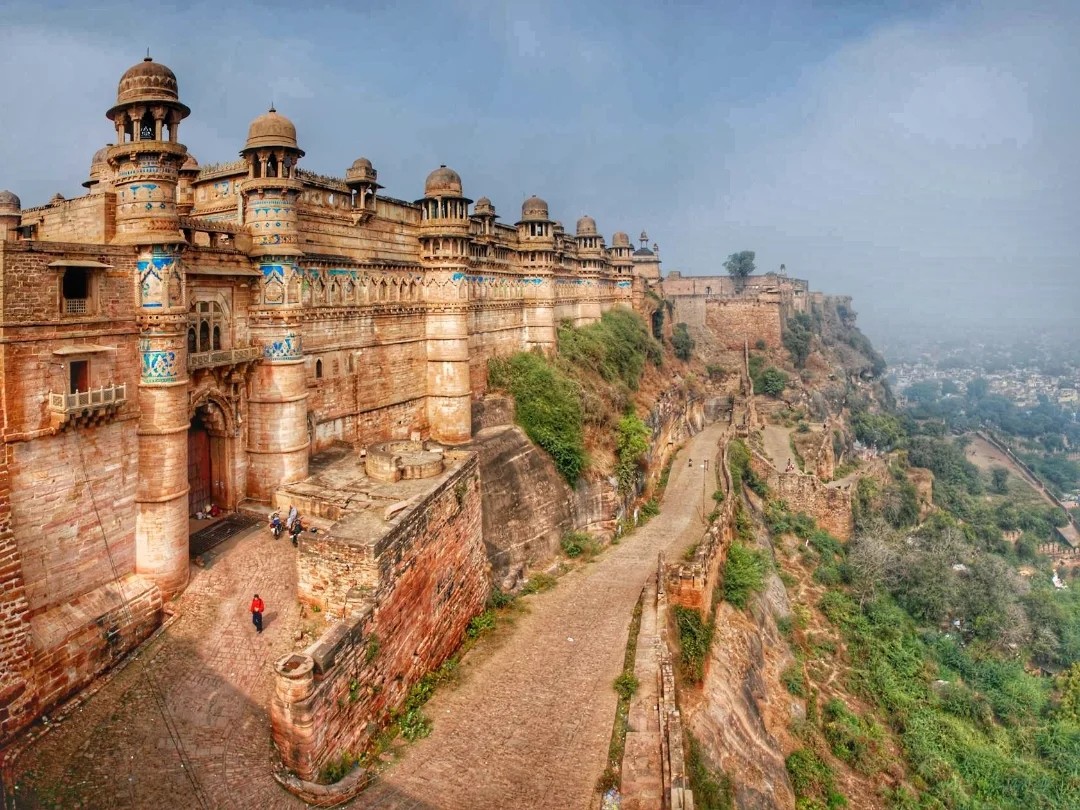
The Gwalior Fort in Madhya Pradesh is one of the most famous landmarks in India, known for its imposing structure and rich history that spans over a thousand years. Perched atop a hill, this majestic fort has witnessed the rise and fall of several dynasties, including the Tomars, Mughals, and Scindias. Famous for its stunning palaces, temples, and intricate carvings, the fort offers panoramic views of the city below. The Gwalior Fort also houses the renowned Sas Bahu Temple and the impressive Man Singh Palace. A symbol of strength and architectural brilliance, it remains a popular destination for history enthusiasts and tourists alike.


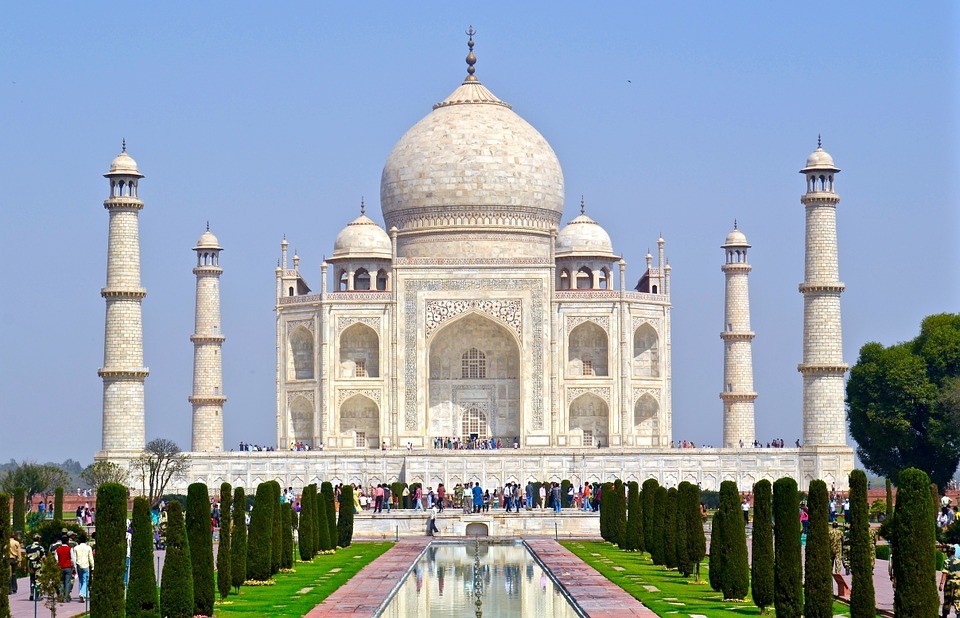
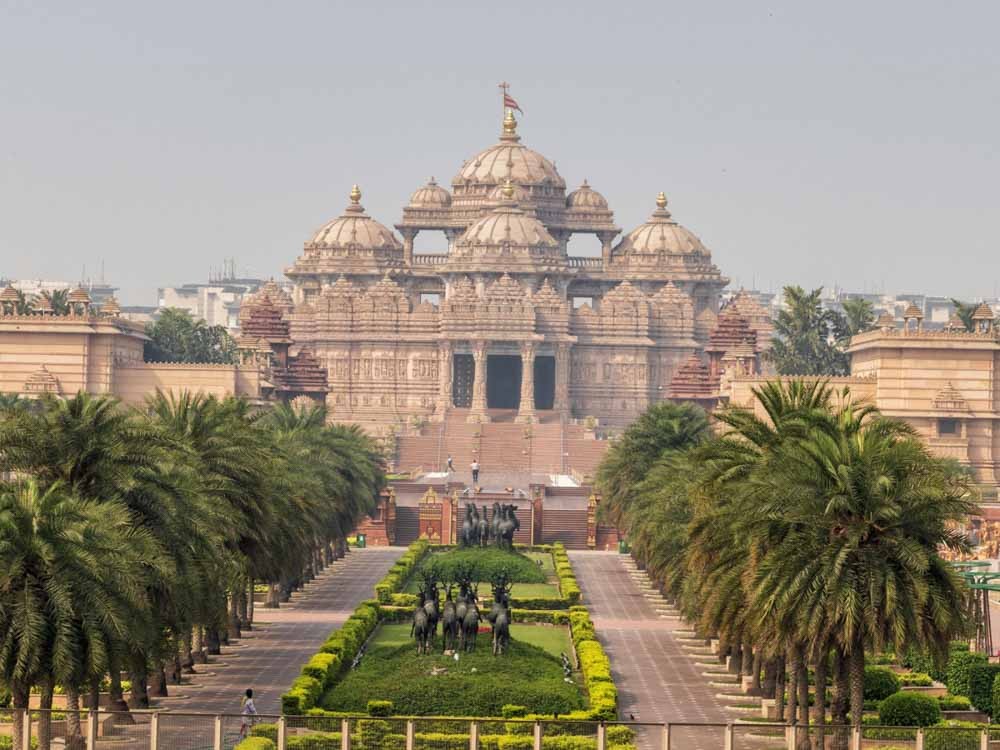
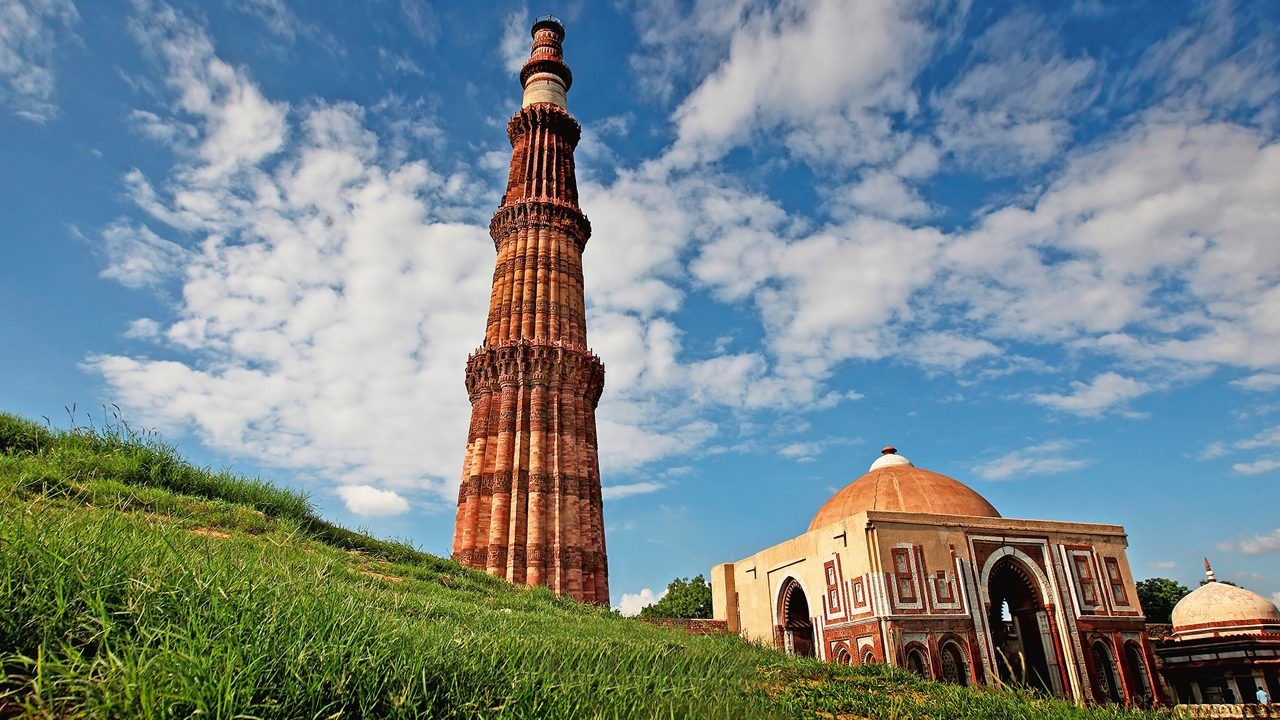
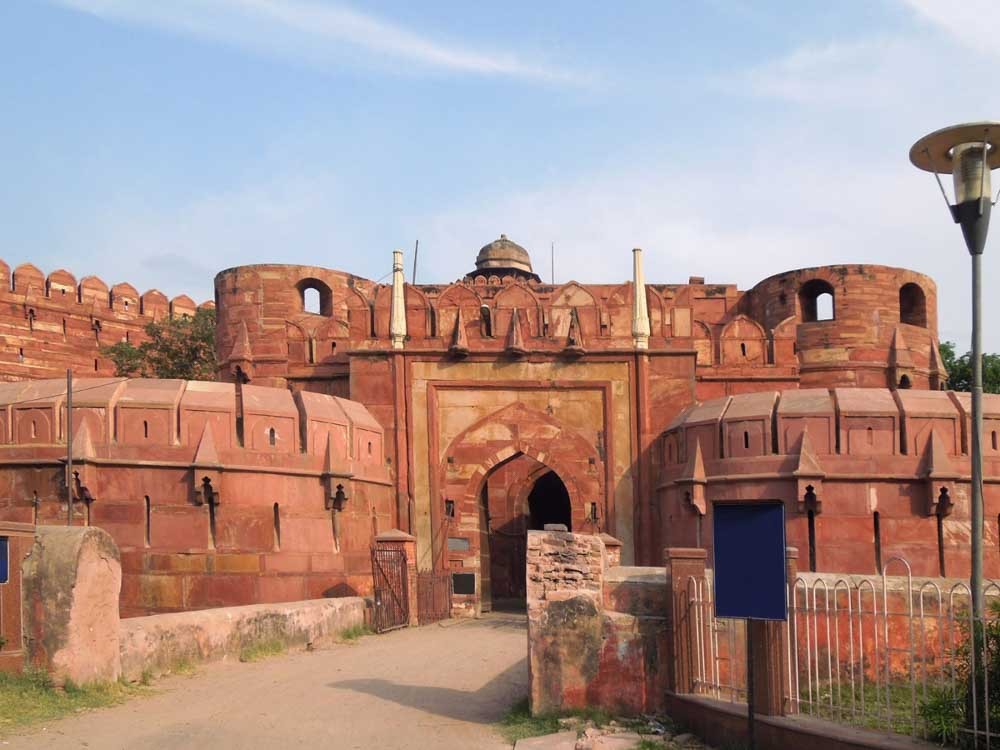
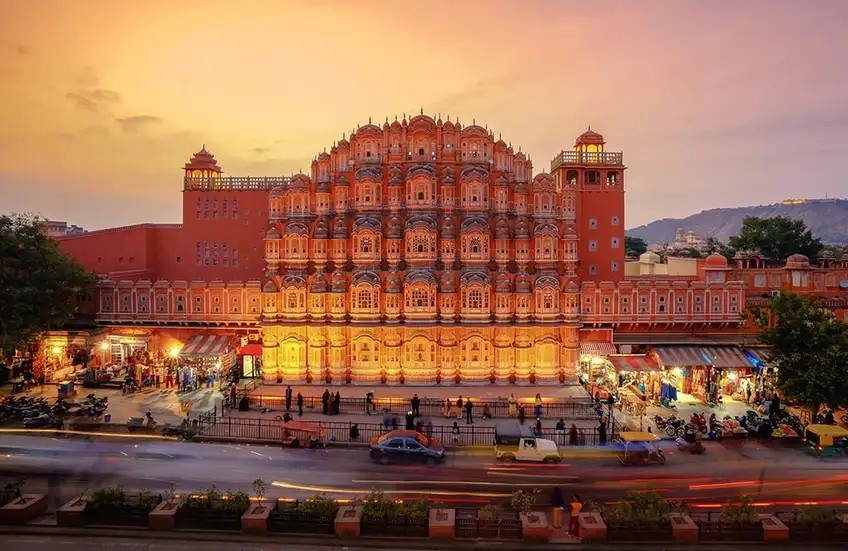
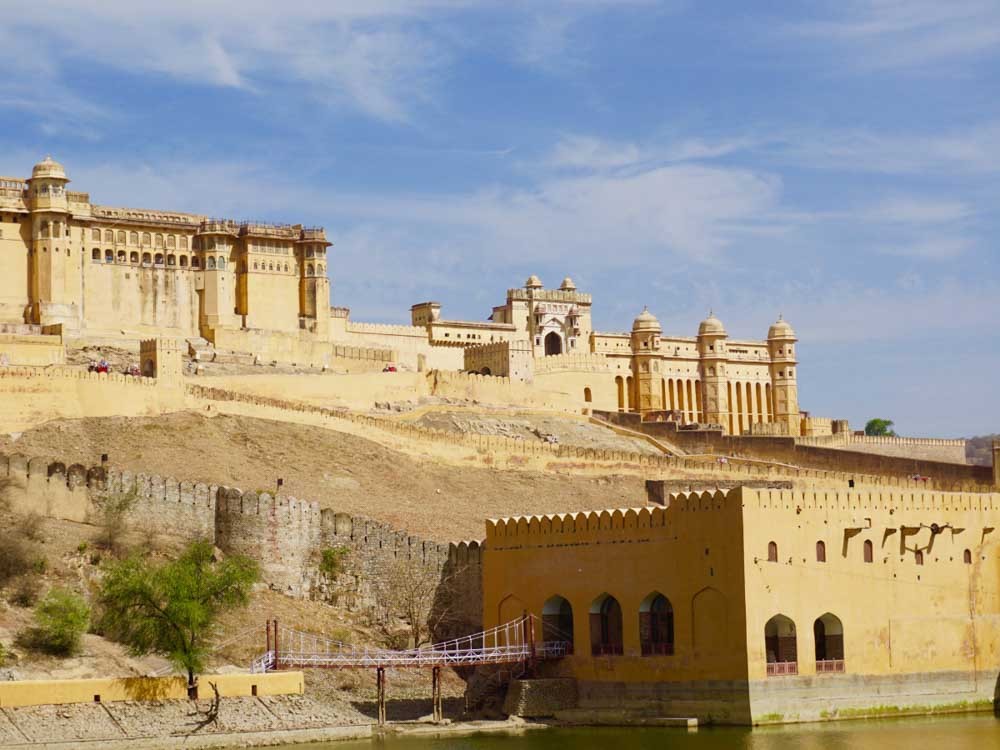
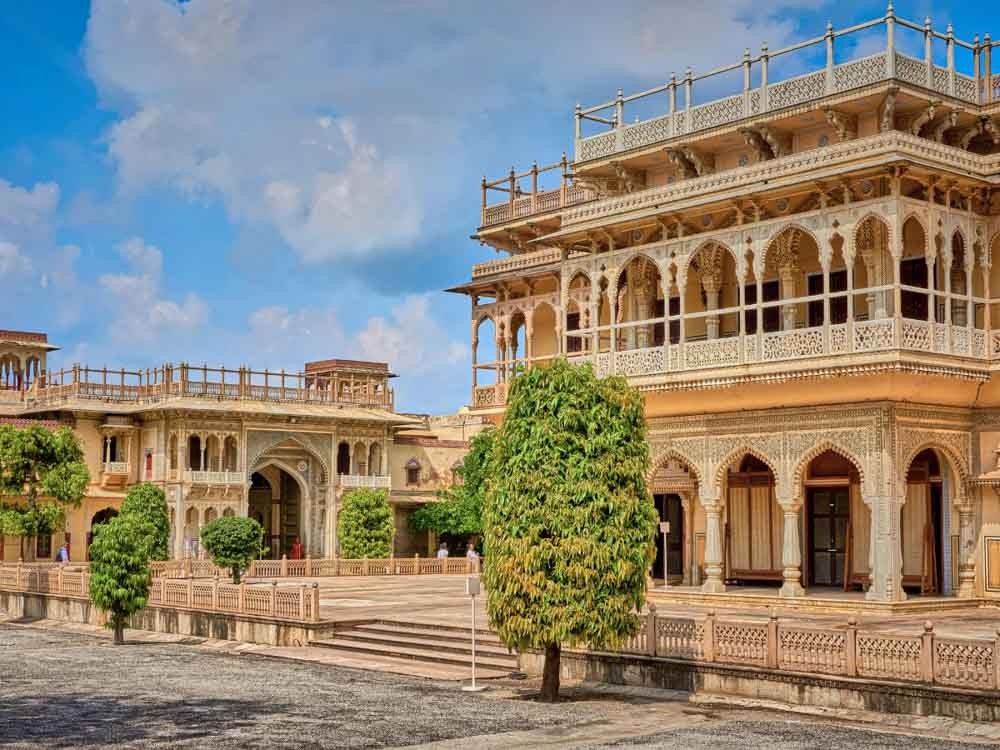

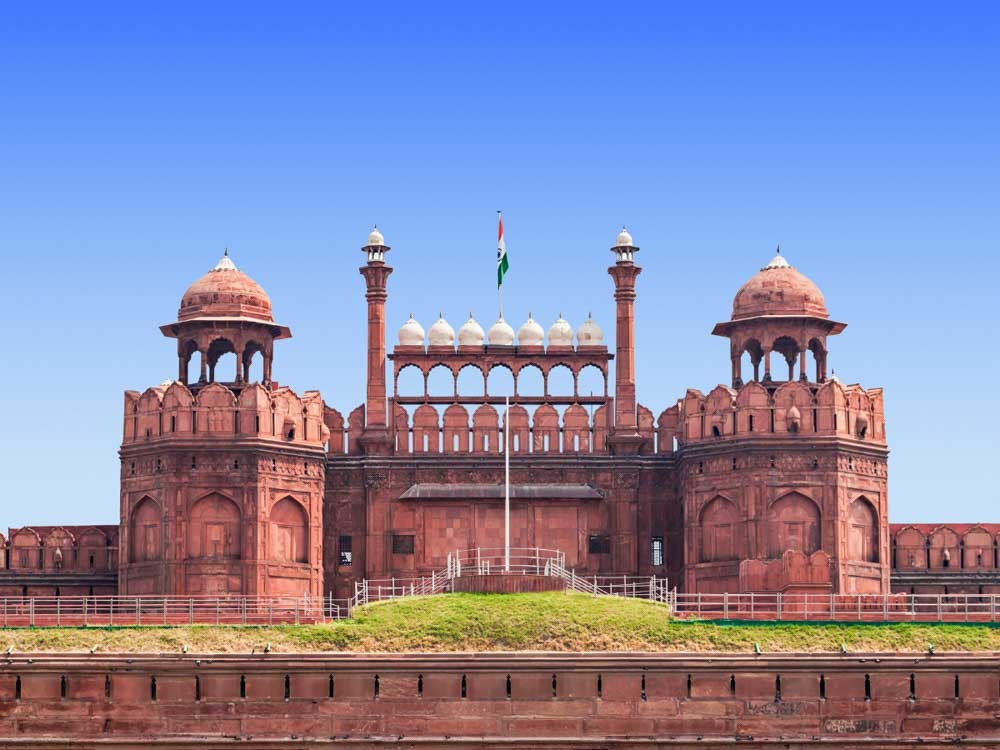
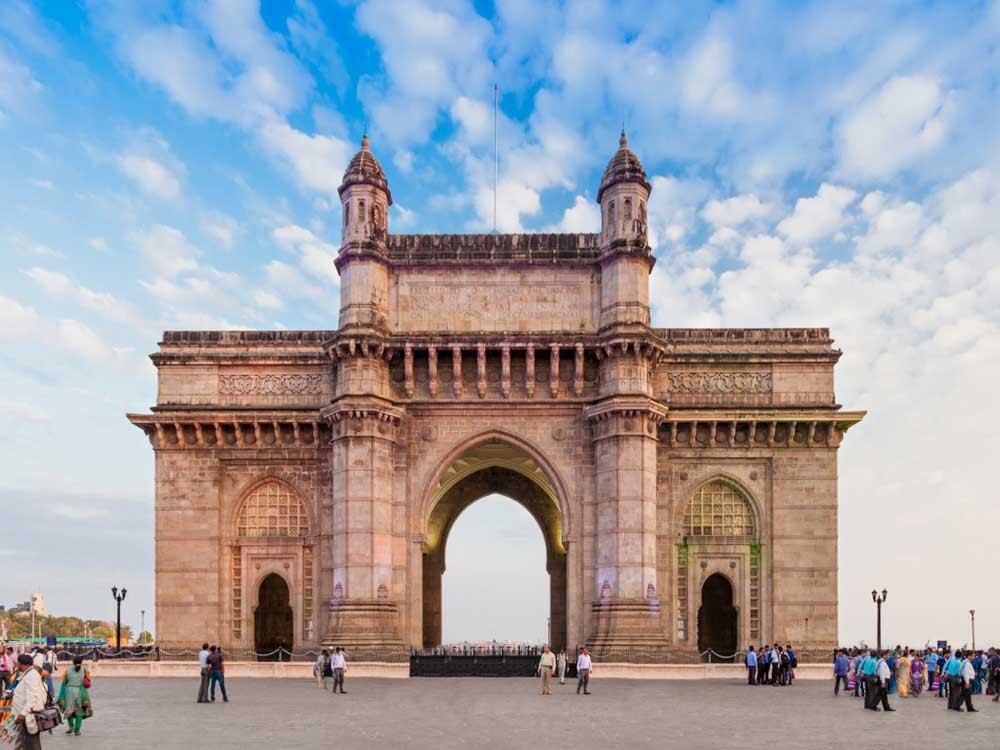
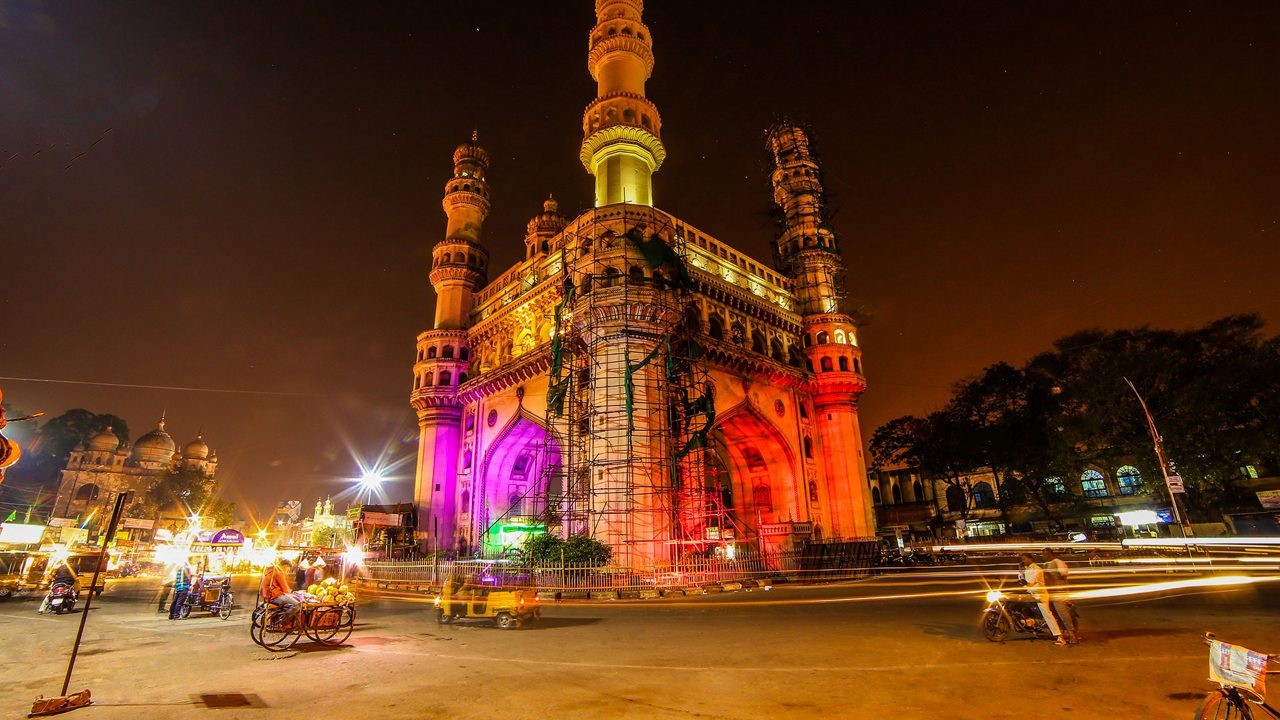
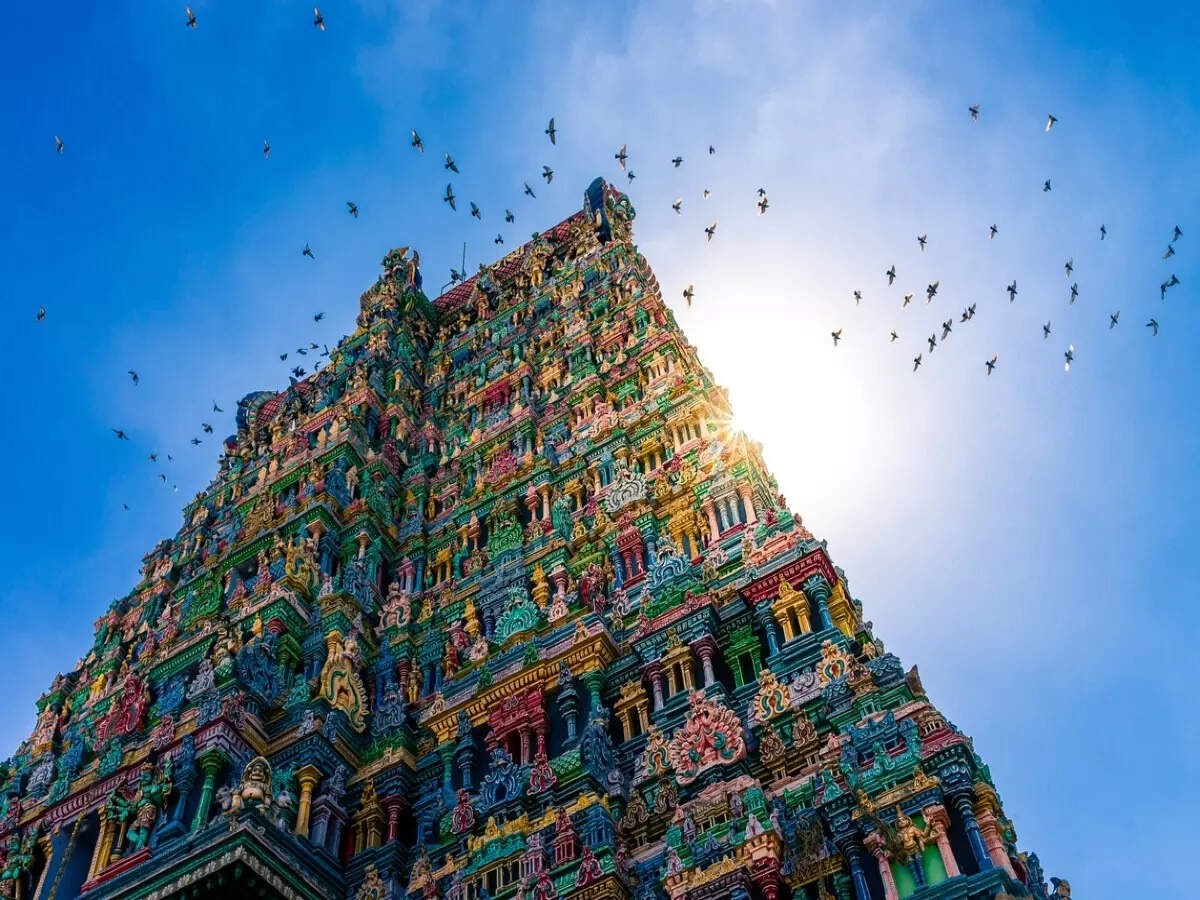
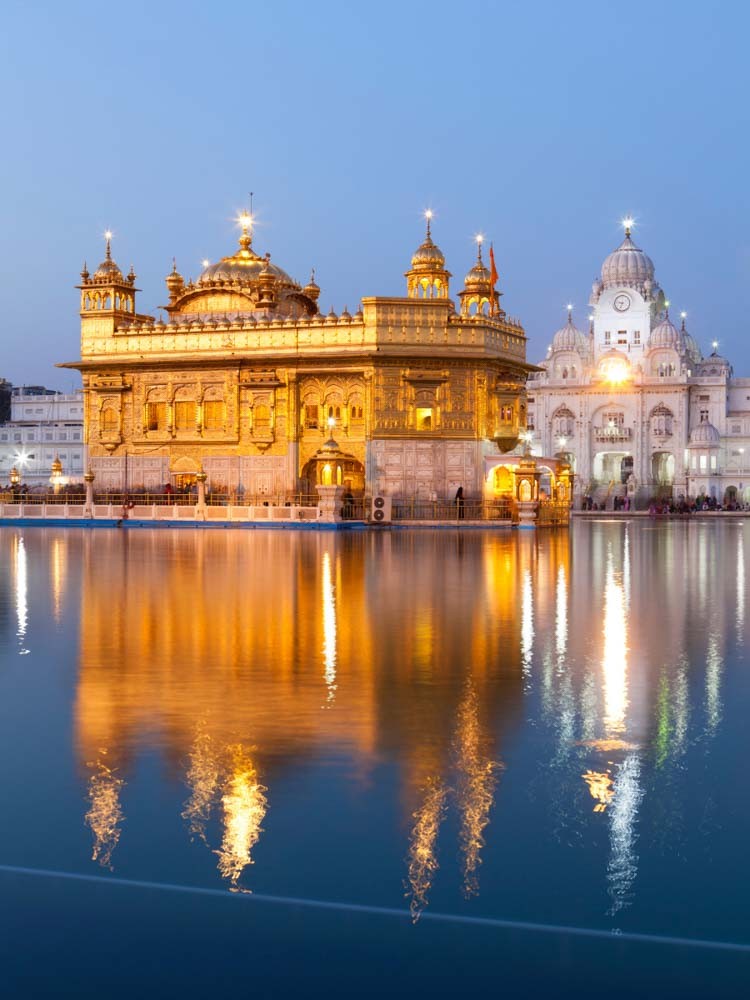
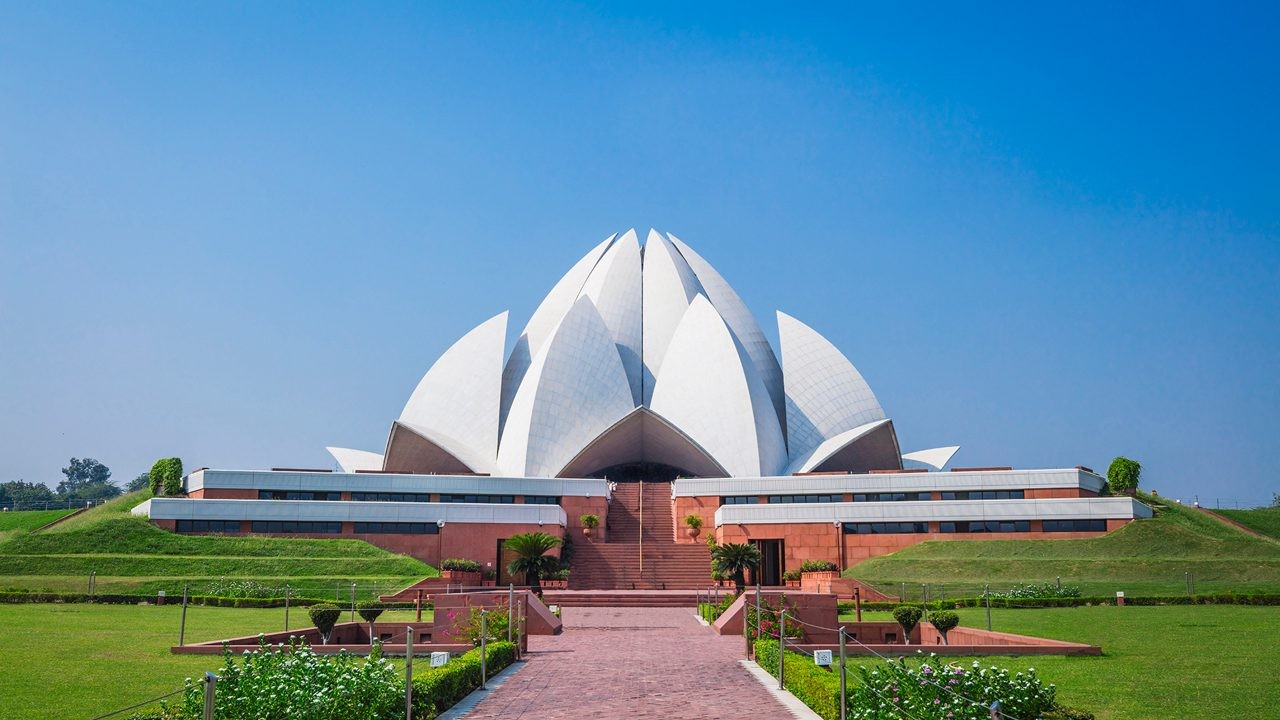
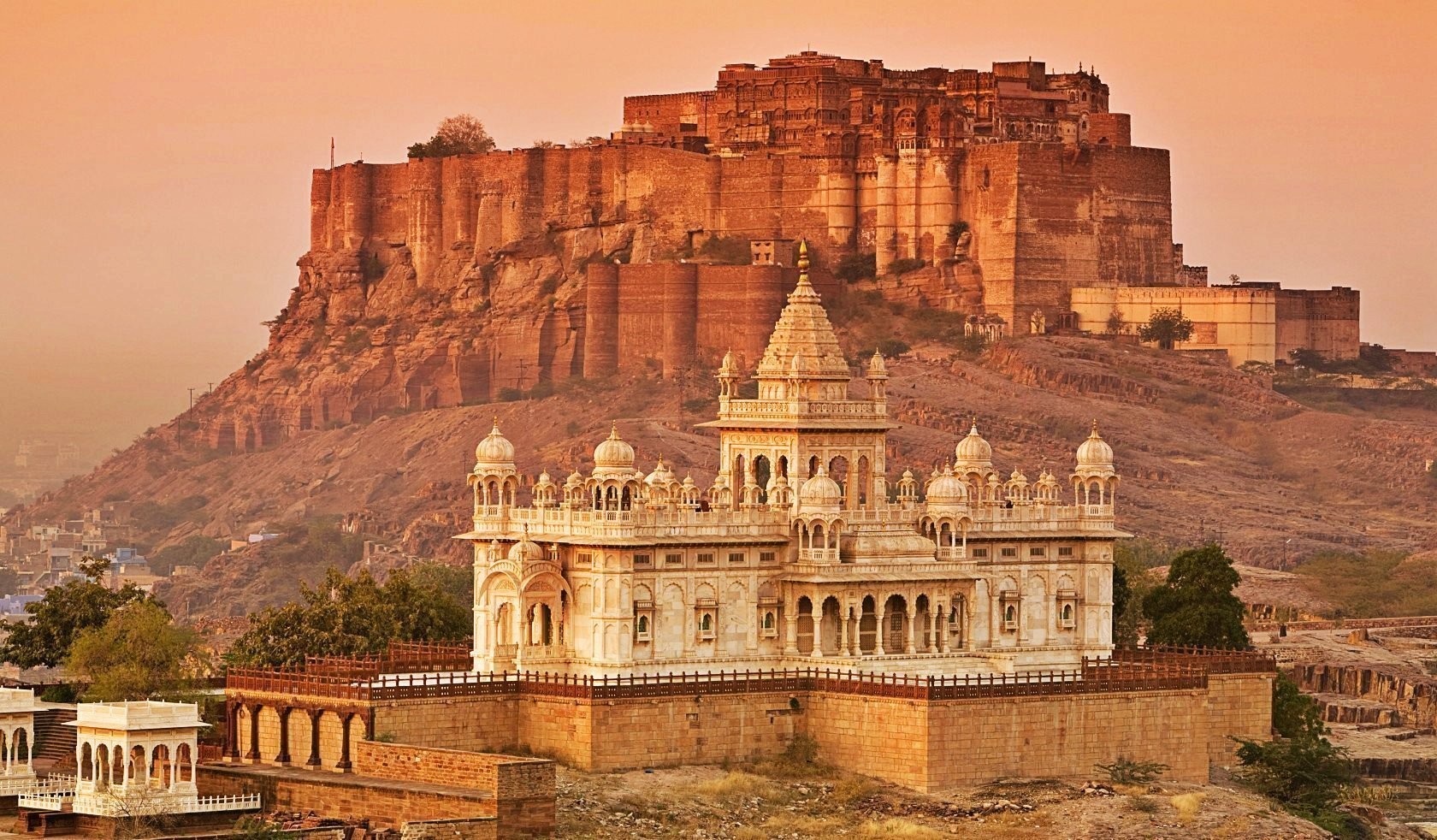


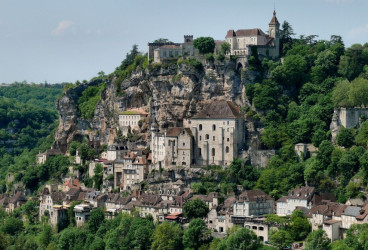







{{item.get_author.first_name}} {{item.get_author.last_name}}
Level 7
5 Photos
36 Reviews
{{item.comment_txt}}
{{item_reply.get_author.first_name}} {{item_reply.get_author.last_name}}
@ {{item_reply.reply_to}}, {{item_reply.reply_txt}}